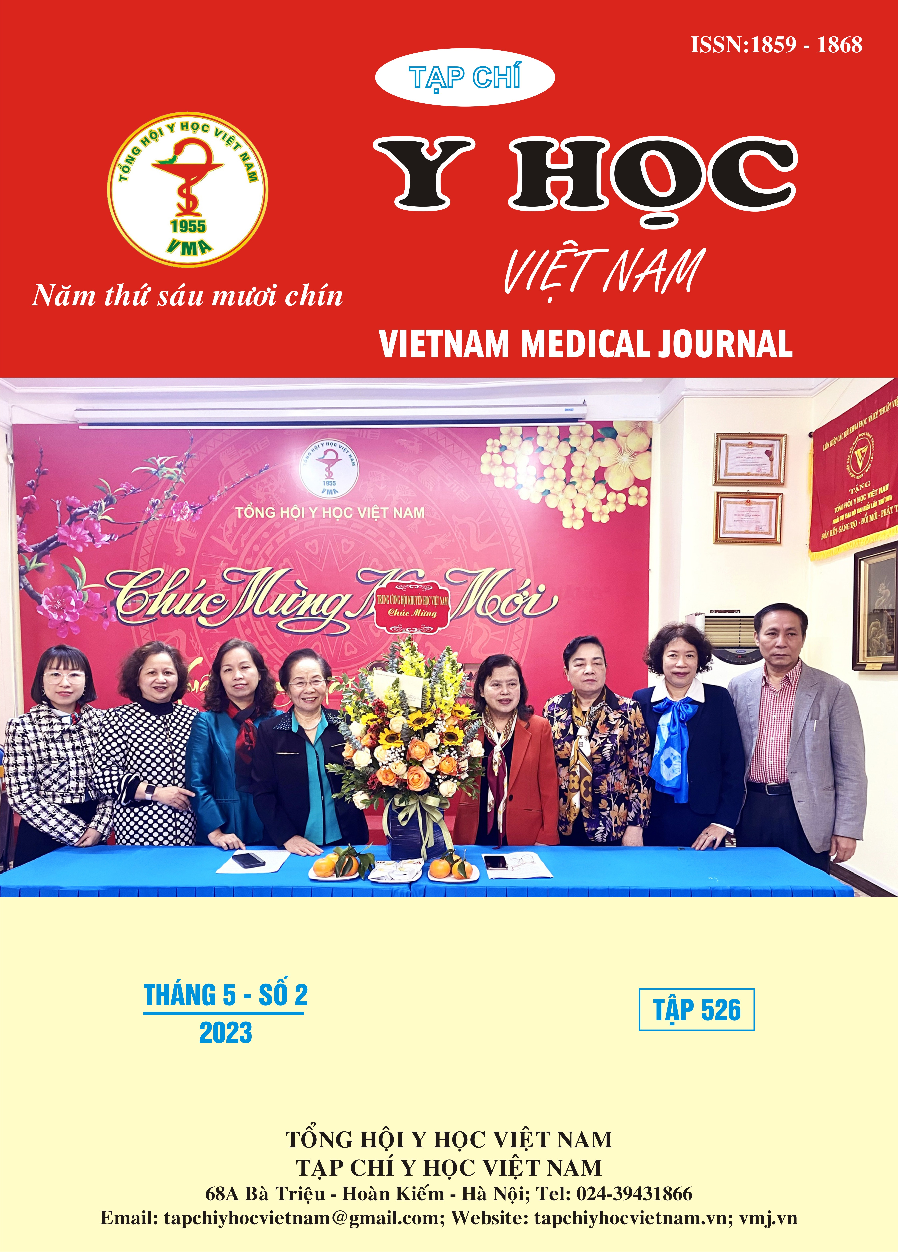MINIMALLY INVASIVE TREATMENT FOR ATRIAL SEPTAL DEFECT USING THE RIGHT VERTICAL INFRA-AXILLARY MINI-THORACOTOMY APPROACH AT VIETNAM NATIONAL CHILDREN’S HOSPITAL
Main Article Content
Abstract
Objective: Evaluate the efficacy and primary outcomes of minimally invasive treatment for atrial septal defect using the right vertical infra-axillary mini-thoracotomy approach at Vietnam National Children’s Hospital. Methods: Retrospective study was conducted to evaluate patients diagnosed with atrial septal defect who underwent surgical repair using the right vertical infra-axillary mini-thoracotomy at Heart Center-Vietnam National Children’s Hospital from August 2019 to August 2022. Results: During the study period, a total of 94 patients was retrospectively studied. There were 45 males and 49 females. The median age and median weight of patients in this study were 35.9 months (IQR, 16-73.7 months) and 12 kg (IQR, 8.5-16.3 kg), respectively. Sixteen patients (17%) had partial anomalous pulmonary venous return, 5 (5.3%) had supravalvar pulmonary stenosis, 3 (3.2%) had pulmonary valve stenosis. The mean length of skin incision was 5.4 ± 0.6 cm. The mean time of operation, bypass time, and aortic cross-clamp time were 150.3 ± 35.1 minutes, 29.7 ± 18.5 minutes, and 51.1 ± 25.1 minutes. There were 69 patients (73.4%) who had secondum atrial septal defect, and 25 had sinus venousus atrial septal defect. The defect was closed directly in 45 patients (47.9%), and an autologous pericardial patch has been used in 49 patients (52.1%). No patient needs to convert from another approach. There were 2 patients required reoperation for bleeding control and 1 patient had extracorporeal membrane oxygenation support. The mean time of postoperative ventilation was 8.6 ± 14.9 hours, and the mean time of postoperative hospital stay was 9.0 ± 4.2 days. No early mortality or late mortality in this group at the latest follow-up. All patients and their parents were satisfied with the cosmetic results of this approach. Conclusions: Primary results of surgical repair for atrial septal defect using the right vertical infra-axillary mini-thoracotomy approach were safe and effective. This surgical approach has high a strong cosmetic impact and satisfies the patient’s and family’s expectations.
Article Details
Keywords
atrial septal defect, minimally invasive surgery, the right vertical infra-axillary mini-thoracotomy approach
References
2. Yoshimura N, Yamaguchi M, Oshima Y, Oka S, Ootaki Y, Yoshida M. Repair of atrial septal defect through a right posterolateral thoracotomy: a cosmetic approach for female patients. Ann Thorac Surg. 2001 Dec;72(6):2103–5.
3. Rao RK, Varadaraju R, Basappa G, Nagaraja P. Repair of Sinus Venosus Defects With Partial Anomalous Pulmonary Venous Connection in Children by Modified Right Vertical Infra Axillary Thoracotomy. Innov Technol Tech Cardiothorac Vasc Surg. 2019 Dec;14(6):553–7.
4. Liu H, Wang Z, Xia J, Hu R, Wu Z, Hu X, et al. Evaluation of Different Minimally Invasive Techniques in Surgical Treatment for Ventricular Septal Defect. Heart Lung Circ. 2018 Mar;27(3):365–70.
5. Ma ZS, Wang JT, Dong MF, Chai SD, Wang LX. Thoracoscopic closure of ventricular septal defect in young children: technical challenges and solutions. Eur J Cardiothorac Surg. 2012 Dec 1;42(6):976–9.
6. Hong ZN, Chen Q, Lin ZW, Zhang GC, Chen LW, Zhang QL, et al. Surgical repair via submammary thoracotomy, right axillary thoracotomy and median sternotomy for ventricular septal defects. J Cardiothorac Surg. 2018 Dec;13(1):47.
7. An K, Li S, Yan J, Wang X, Hua Z. Minimal Right Vertical Infra-axillary Incision for Repair of Congenital Heart Defects. Ann Thorac Surg. 2022 Mar;113(3):896–902.
8. Yan L, Zhou ZC, Li HP, Lin M, Wang HT, Zhao ZW, et al. Right vertical infra-axillary mini-incision for repair of simple congenital heart defects: a matched-pair analysis. Eur J Cardiothorac Surg. 2013 Jan;43(1):136–41.


